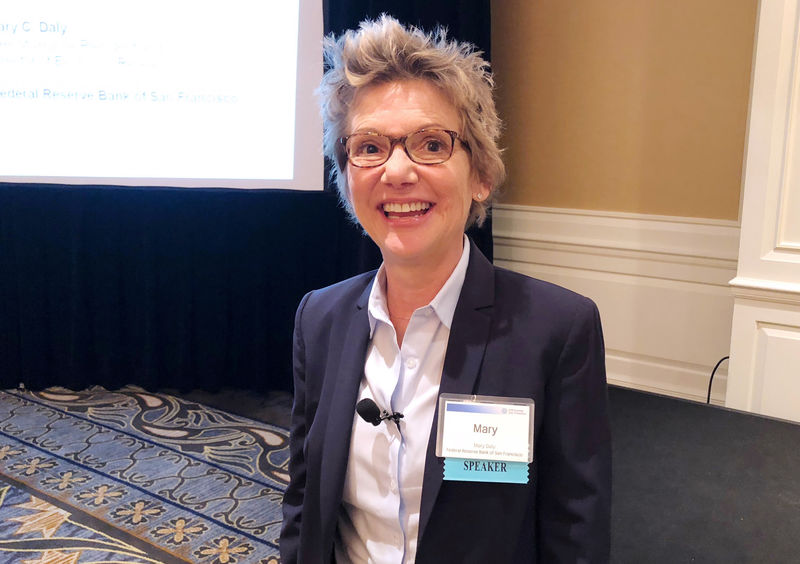 © Reuters. FILE PHOTO – San Francisco Federal Reserve Bank chief of research Mary Daly stands near the podium before a speech at the CFA Society in San Francisco
© Reuters. FILE PHOTO – San Francisco Federal Reserve Bank chief of research Mary Daly stands near the podium before a speech at the CFA Society in San FranciscoIDAHO FALLS, Idaho (Reuters) – With the U.S. economy at or beyond full employment and inflation likely to rise slightly above a 2 percent goal over the next year, the Federal Reserve should continue to raise rates gradually, its newest policymaker said Monday.
“I view this gradualism as a process of iterated learning, guided by incoming data,” San Francisco Federal Reserve Bank president Mary Daly said in her first public remarks since taking her new job last month. “That is, we take a policy action, wait, learn about the economy’s response, and repeat. The information gathered through this gradual approach is crucial for determining the speed and size of the subsequent policy adjustments.”
That view puts Daly, who has a vote on the Fed’s monetary policy committee this year, squarely in the center of the policy spectrum at the U.S. central bank. The Fed has been raising interest rates by a quarter of a percentage point each quarter all year and is expected to do so again when it meets next month.
The gradual rate increases are not expected to start slowing the current economic expansion, which Daly said Monday seems “destined” to become the longest period without a recession in U.S. history, until sometime next year, most policymakers believe.
As of September, when they last released public forecasts, U.S. central bankers expect to continue to raise rates next year.
Daly said that pace will depend on how the economy, fueled currently by tax cuts and government spending domestically and global growth internationally, fares.
“The (Fed) is not on autopilot, with quarterly rate increases locked in,” Daly said in the remarks to a regional economic development group here. “We’re constantly looking at the data and adjusting the monetary policy path as needed in response.”
For now, she said, the U.S. economy is “very good,” with a booming labor market — unemployment is at 3.7 percent nationally — and an inflation outlook that is “very encouraging.” Still, she said, some people remain on the sidelines, and much could still be done to boost both educational attainment and labor force participation.
In particular, she suggested, the U.S. may be idling much of its female workforce because of weak parental leave laws. Citing a study that is expected to be released on Tuesday, Daly noted that Canadian women participate in the workforce at much higher rates than their U.S. counterparts.
“I’m not advocating we adopt the Canadian system or recommending any particular policy,” said Daly, a longtime student of gender and race in the labor economy. “But the comparison with Canada, as well as with other industrialized nations, shows that policy matters and that, with the right mix of skills and support, there’s meaningful potential for increasing U.S. workforce participation.”
Fusion Media or anyone involved with Fusion Media will not accept any liability for loss or damage as a result of reliance on the information including data, quotes, charts and buy/sell signals contained within this website. Please be fully informed regarding the risks and costs associated with trading the financial markets, it is one of the riskiest investment forms possible.
Source: Investing.com



























